Watching History Unfold: Photography’s French Connections in India
In the last leg of its multi-city itinerary, Convergence: A Panorama of Photography’s French Connections in India opened to the public at the India Habitat Centre (IHC), New Delhi from 7–27 February 2023. Presenting a critical trajectory of the history of photography through its Franco-Indian intertwinings, the exhibition unfolded across timelines, personalities and themes, to spotlight several milestones in photo-documentary practices in the subcontinent. Curated by Rahaab Allana, Convergence offered rare and riveting reprints from a variety of institutions, including Musée National des Arts Asiatiques (Guimet), Musée du quai Branly – Jacques Chirac (Paris), the Nicéphore Niépce Museum (Chalon-sur-Saône), Maison Européenne de la Photographie (Paris), and the Goupil Museum (Bordeaux). The outdoor exhibition has already travelled to six cities across India, paying a fitting tribute to early and contemporary Indian photographic practices, as well as key influences and inspirations for the same.
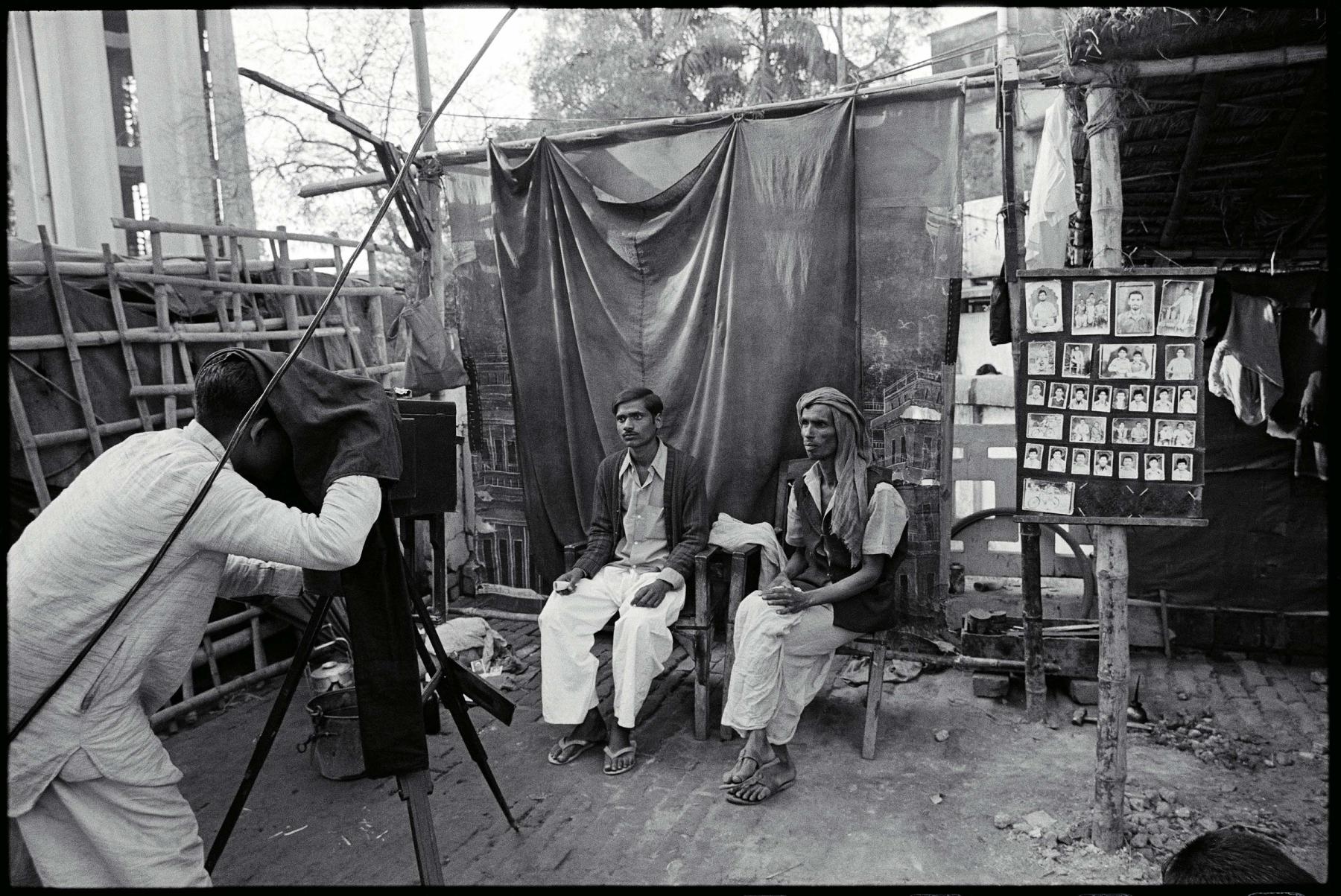
Patna, India (Bernard Pierre Wolff, 1975. Gelatin silver print mounted on cardboard, 215 × 325 millimetres. Image courtesy of Collection Maison Européenne de la Photographie, Paris.)
Mapped through overlapping sections, the exhibition at IHC showcased photographic works by travellers, authors, journalists, photographers, and artists. It covered colonial, modern, and postcolonial periods in the subcontinent from the mid-1900s to the mid-1970s. Convergence paid homage to a turning point in visual history, beginning with the birth of a new way of seeing that was ushered in by Joseph Nicéphore Niépce’s View from the Window at Le Gras (1826-27). In an interesting juxtaposition at the start of the display, Niépce’s heliograph was placed opposite Joan Fontcuberta’s Googlegram: Niépce, in which the artist uses Google search results to create a composite image of Niépce’s original. In this circuit of visual history, the future of the image to come is made acutely present by the sense of inundation and immensity augured by the latter.
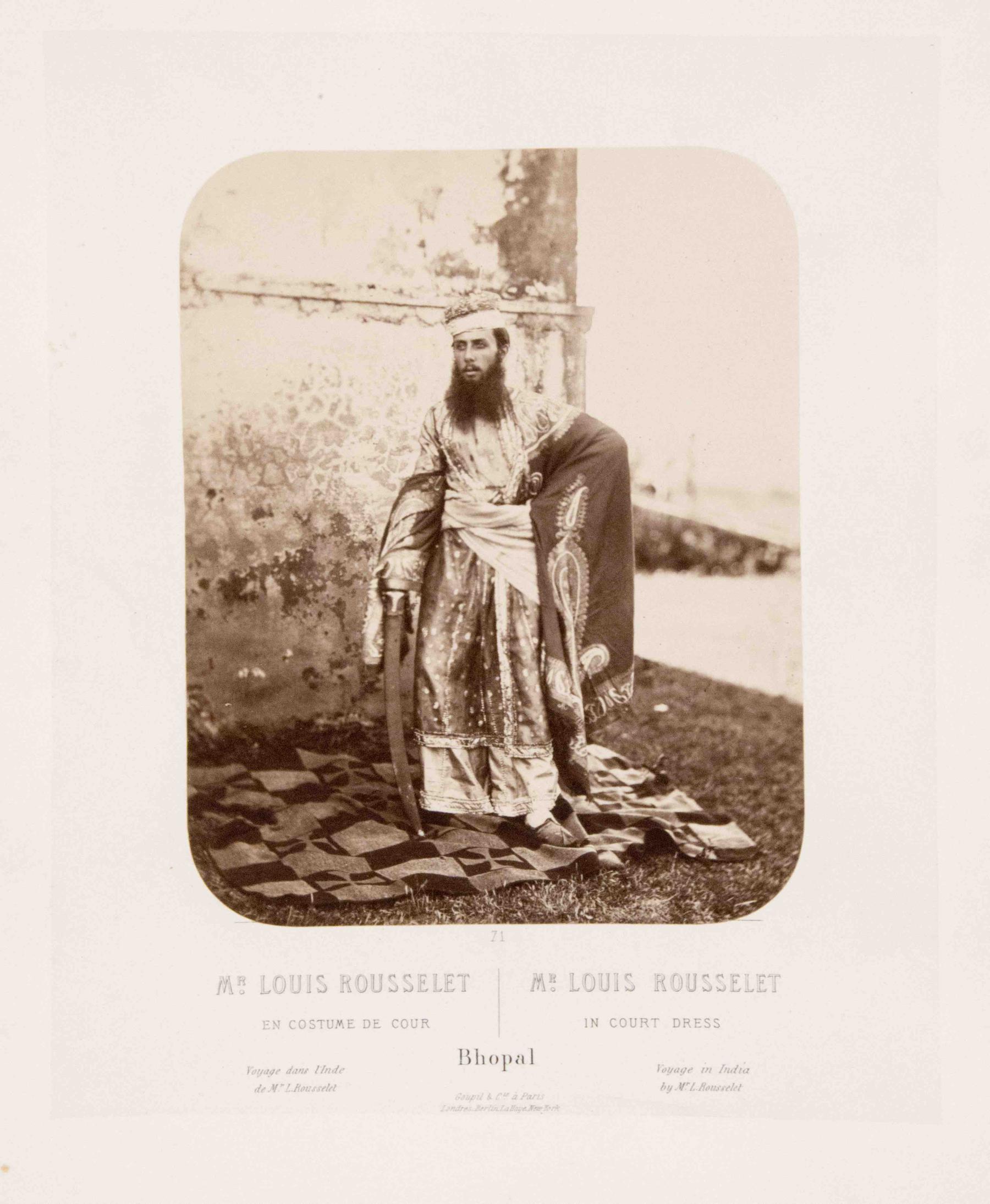
Mr Louis Rousselet en Costume de Cour / Mr Louis Rousselet in Court Dress, (Louis-Théophile Marie Rousselet [Possibly with an Assistant], Bhopal, 1867. Albumen print mounted on paper,178 × 141 millimetres. Image courtesy of Collection Musée Goupil, Bordeaux.)
Another convergence is that of Louis-Théophile Marie Rousselet, a traveller to India in the 1860s, who met India's first photographer king, Maharaja Sawai Ram Singh II, in Jaipur. The introductory section brought together beautiful albumen prints by the two contemporaries, as they documented themselves as well as their sitters. This segued to works by other French practitioners—Baron Alexis La Grange and Jean-Baptiste Oscar Mallitte, for instance—and by recognisable Indian pioneers such as Abbas Ali, Chunni Lall & Bhawani Ram and Lala Deen Dayal, to track the redirection of the lens from looking at a shifting colonial landscape and its introspections to questions of identity and belonging. Portraits of women abound—seated in school, posing against softly lit studio backgrounds, during work—taken by photographers active in the late nineteenth-century, such as Mallitte, Johnston & Hoffman and L.A. Kudterkar.
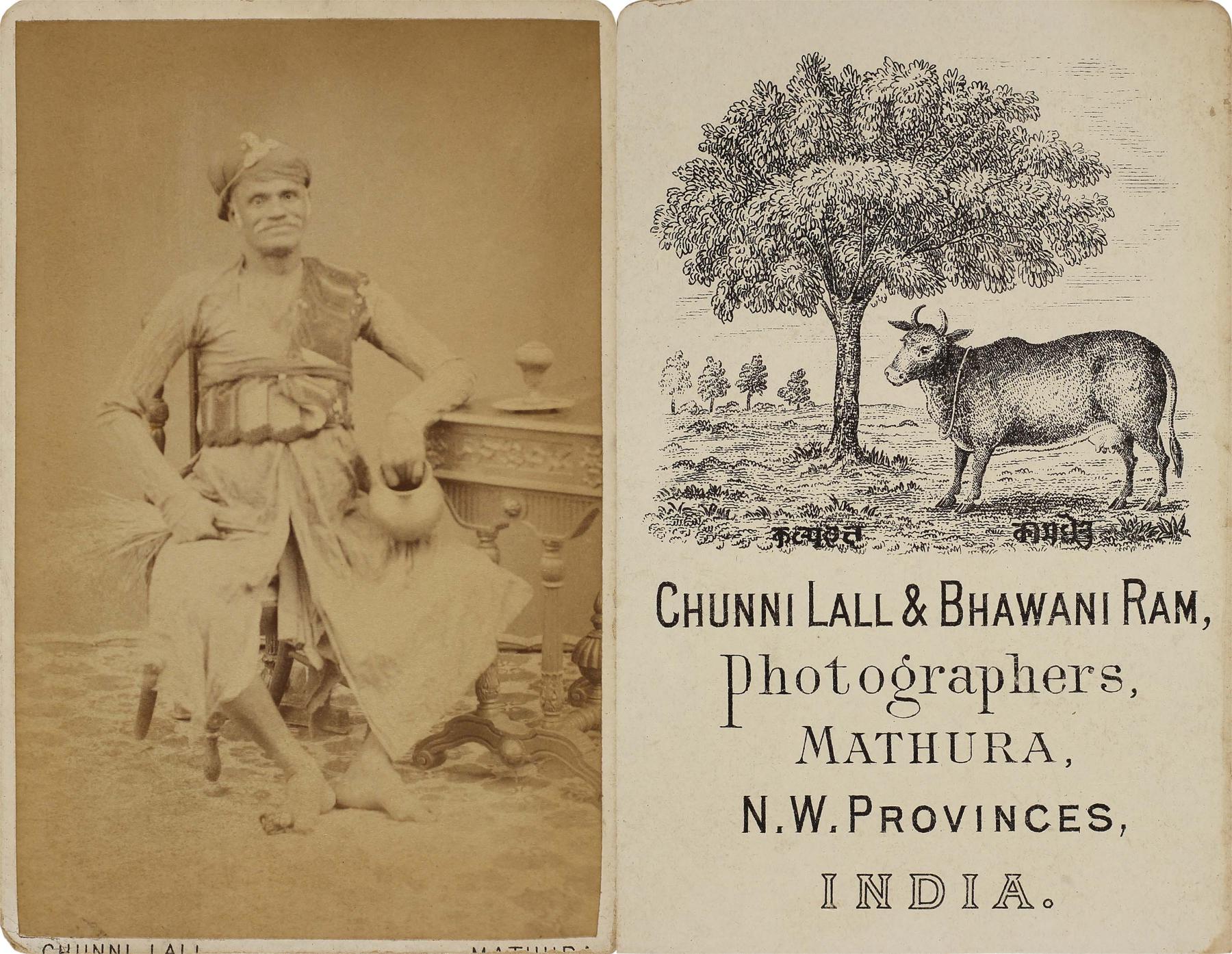
[Recto and Verso] Portrait of a Man (Chunni Lall & Bhawani Ram, c. 1870. Albumen print on carte-de-visite, 92 × 59 millimetres. Image courtesy of The Alkazi Collection of Photography.)
The exhibition then shifted to a more thematic arrangement, as it spanned themes of the public and the private, labour and the political. This segment brought together early twentieth-century French photographers such as Isabelle Massieu, Stéphane Passet, Roger Dumas and Albert Kahn, as they documented the everyday as well as the “imperial spectacle”, mapping the aesthetic as it moved towards critical photojournalistic tendencies. Accompanying these insights into the landscape was a pre-independence album from the Alkazi Foundation titled Collections of Photographs of Old Congress Party. Attributed to K.L. Nursey, a staffer for the Times of India, it shed light on events such as the Civil Disobedience Movement, highlighting with great intrigue the women’s wing of freedom fighters, the Deshsevikas. What becomes evident here is a possible reading of the complexity of resistance and political activism, as intimate inner lives were programmed with the public self, adding nuance to the revolution.
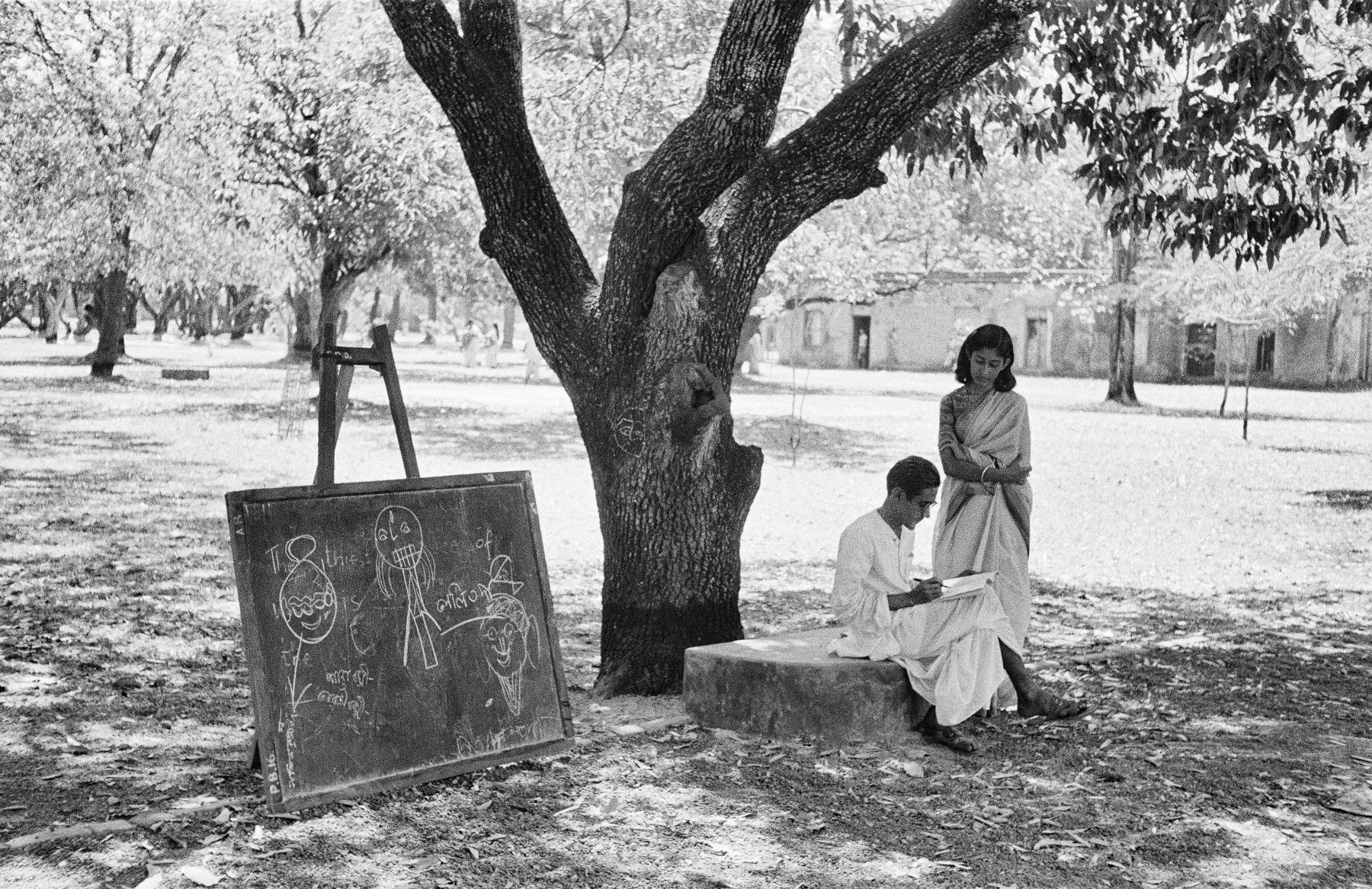
Students at Visva-Bharti University, Shantiniketan, 1956. (Marc Riboud. Gelatin silver print [modern], 300 × 400 millimetres. Image courtesy of Fonds Marc Riboud / Collection Musée National des Arts Asiatiques – Guimet.)
In a mammoth dedication, the exhibition centred works by the illustrious French photojournalist Marc Riboud, tracing his year-long itinerary in the country. It documented his visits to Rajasthan, Chandigarh, Kolkata, Mumbai and Delhi, as well as his interactions with filmmaker Satyajit Ray and musician Ravi Shankar. Riboud’s journey through India was also positioned alongside the rise of photographers such as Homai Vyarawalla, whose images were displayed in this section. With a concluding segue, the display moved deeper into the twentieth-century with post-independence works by modern European photographers. Working on a commission basis and with a contrast-driven social realist format, they found familiarities within the cities and people of India through their lenses and through the careful rapport of the documentary as a genre. This included photographers such as Denis Brihat, Paul Almásy, Michel Séméniako, Max Pam, and the oft-forgotten French-born American Bernard Pierre Wolff. In its depictions of the embeddedness of French and Indian photographic histories, Convergence produced a layered (re)writing of visual history, commemorating not only the melding of lives and careers but also the dynamism of the medium itself. It brought to the table a narrative spawning multiple narratives, adding to the fecundity of the question: what is the photographic capable of?
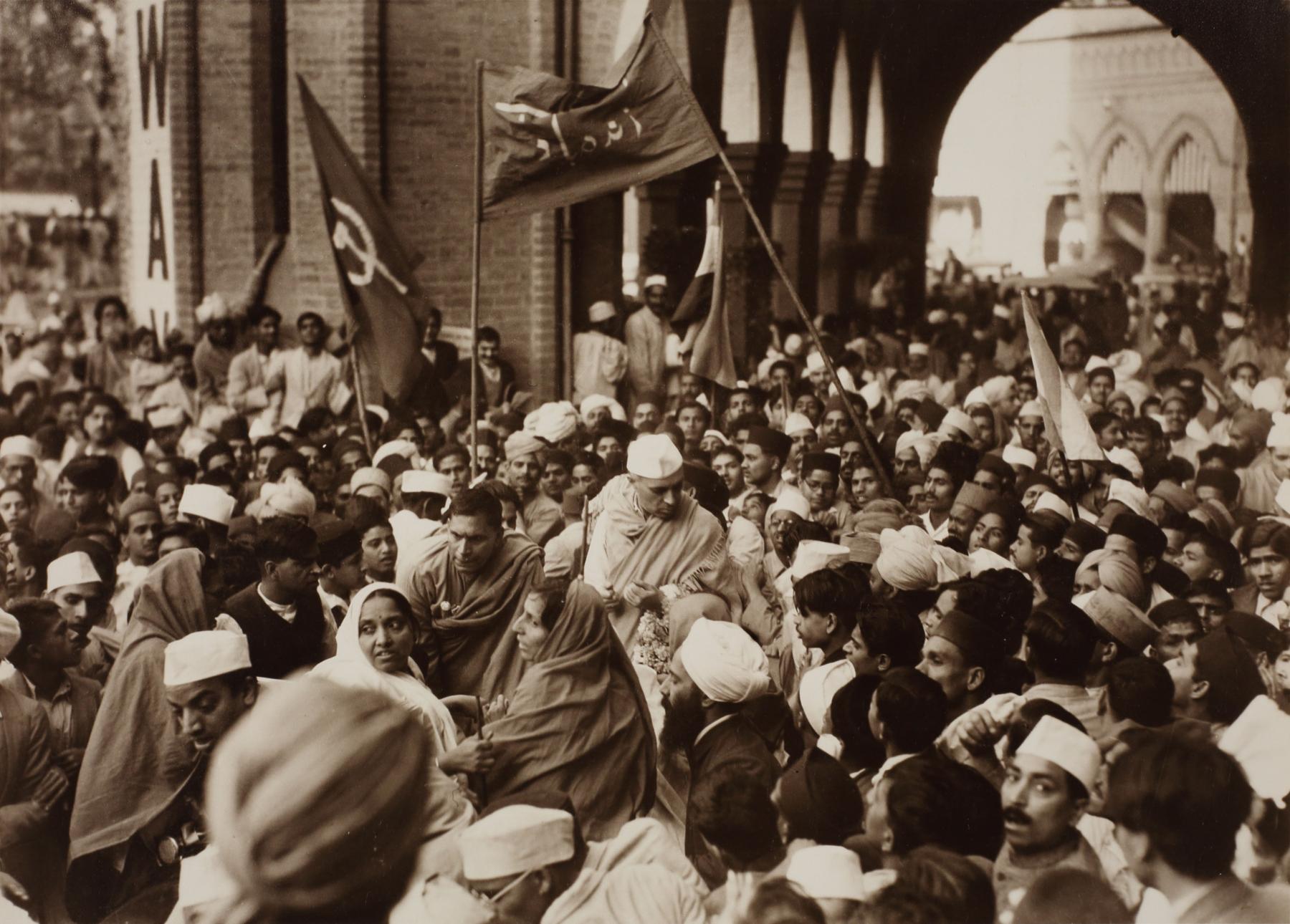
Nehru in a procession (Unknown Photographer, c. 1930-40. Modern print, 211 × 296 millimetres. Image courtesy of The Alkazi Collection of Photography.)
To read more about image histories from the subcontinent and their transnational connections, click here, here and here.




